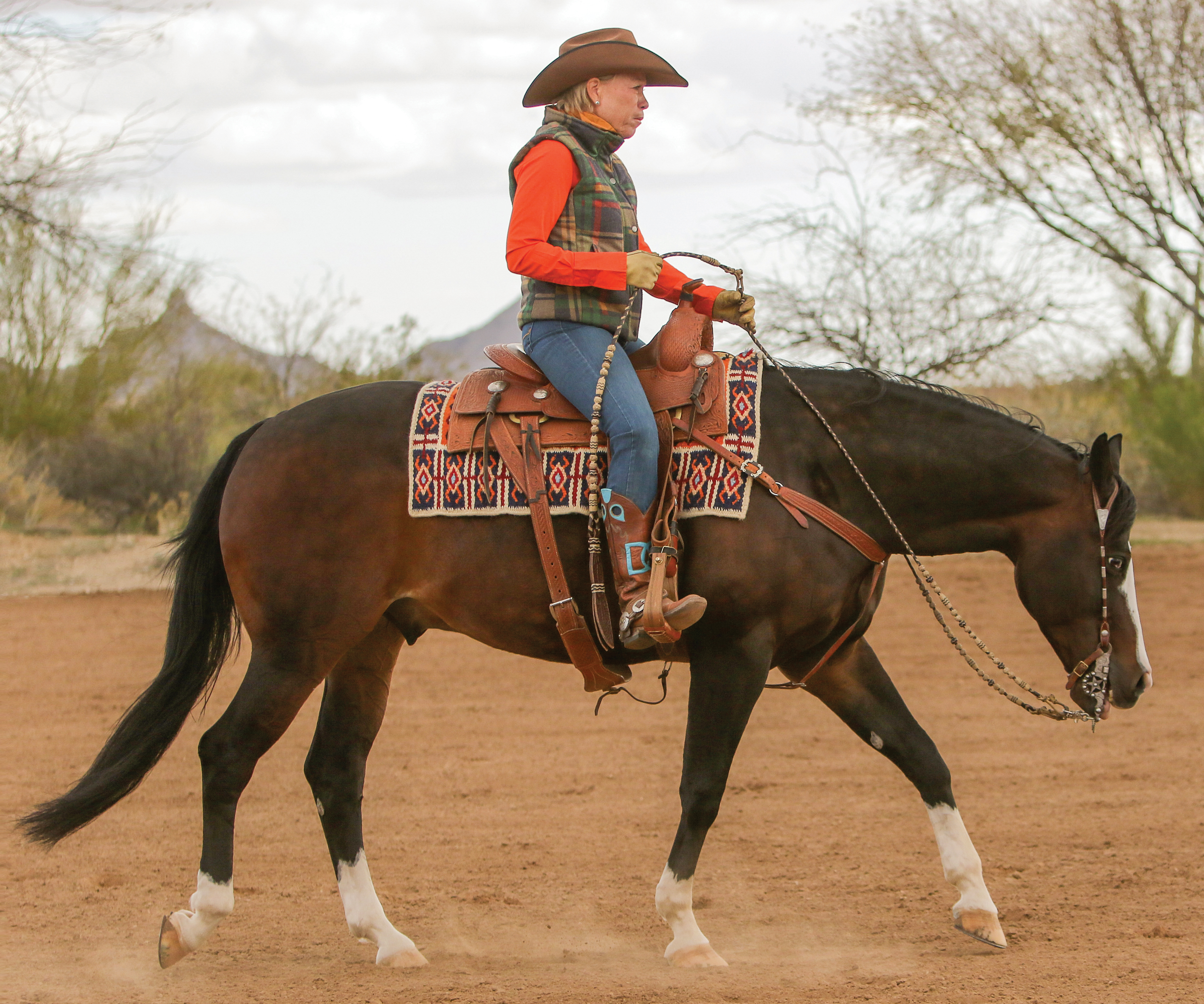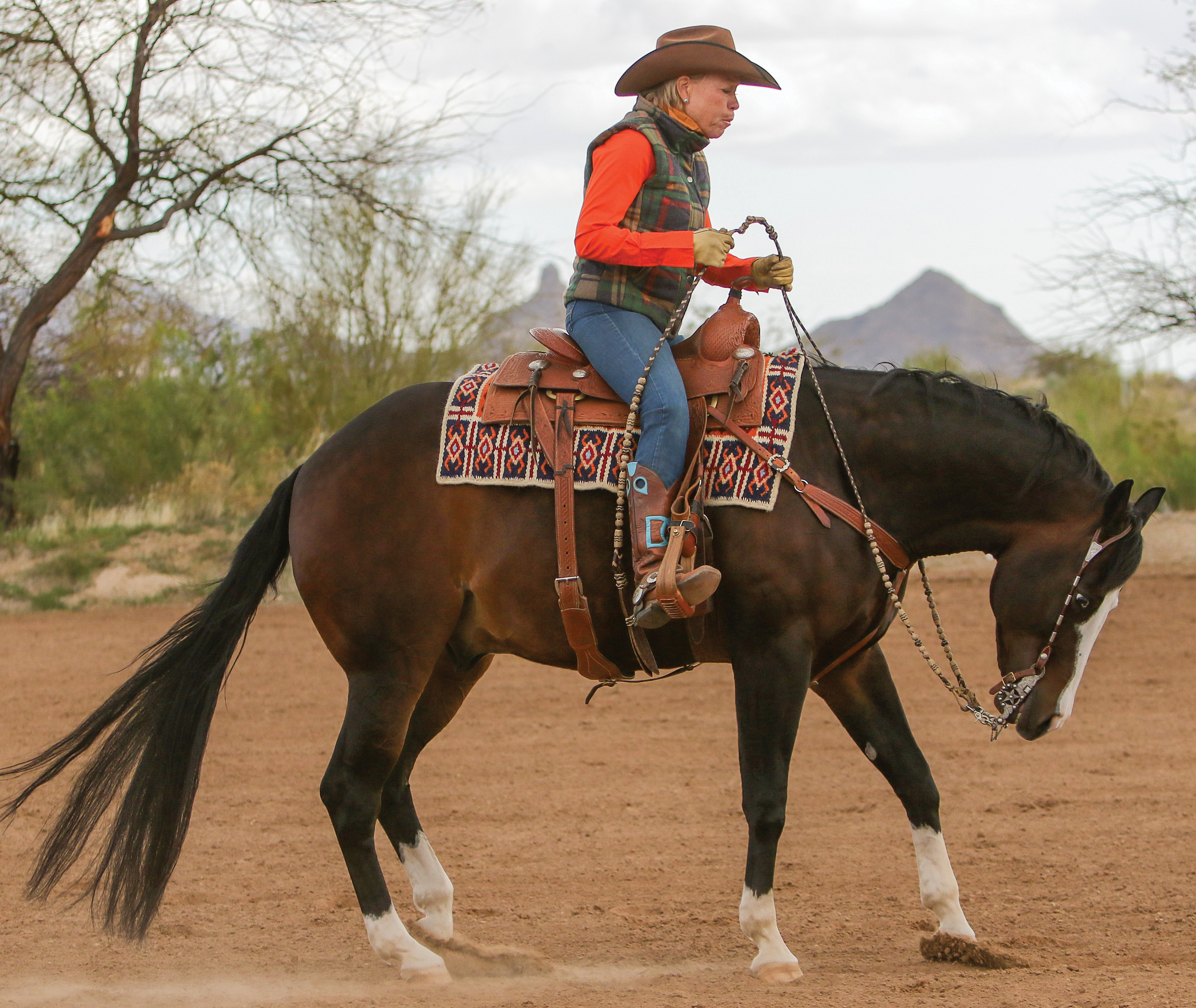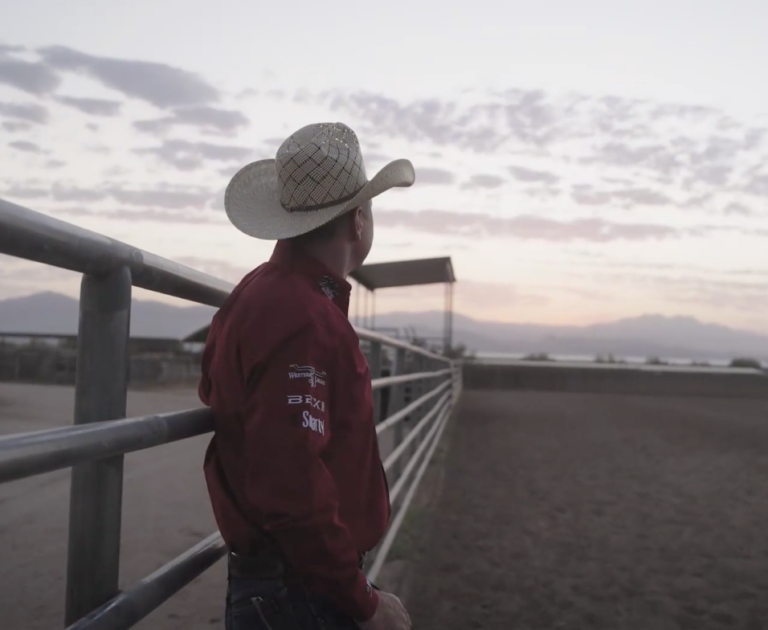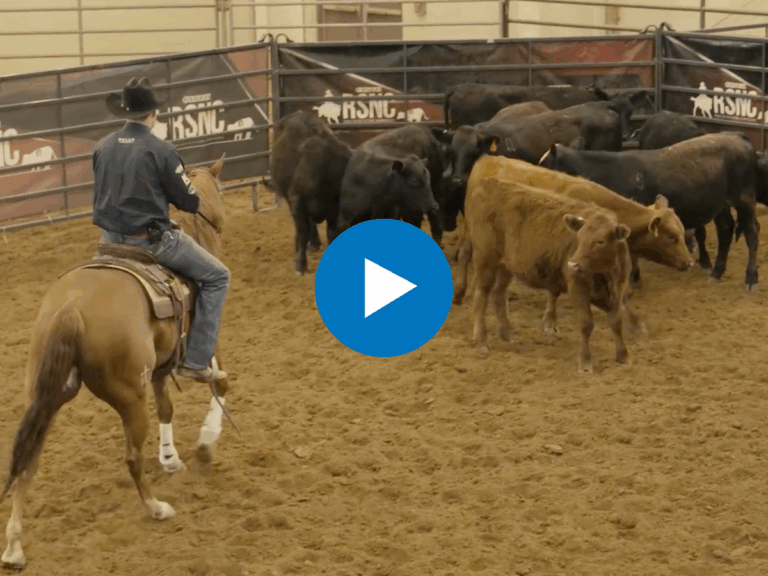One spin isn’t as easy a task as it might sound. It’s easy to overturn and get panicky because it happens very quickly. The best advice I can share with you—both as a judge and an exhibitor—is to strive for correctness. Don’t try to make it look like a plus-half; most of the time you’ll wind up with a minus-half when you try too hard. Know your horse’s abilities and make it correct.
Your successful spin maneuver starts with your approach, stop, and 360-degree turn itself, and ends with an exit that sets you up for success in the next maneuver. I’ll go through each of those steps here.
Step One
My approach is businesslike, which is how I tackle my entire ranch riding pattern. I ride with a purpose and ask my horse to move out in a similar fashion. If you’re riding on a ranch, you’re on a mission. You must move cattle or fix a fence; you’re there to work and get the job done well and move onto the next task. Ranch riding patterns should be approached in the same manner.

Step Two
I stop my horse at the appointed place, as designated by the pattern. When I stop him, I prepare for the first turn. I stay soft—I don’t want to intimidate my horse or teach him to anticipate the maneuver. Depending on my horse’s response time and his comfort level, I try to minimize the pause before the turn. A lengthy pause, as you might see in a reining pattern, isn’t appropriate here. I’m here to get in, do my job, and get out.

Step Three
I cue for my turn to the right with enough pressure to turn my horse to the best of his ability. With practice at home, I can determine if he’s a slower turner or if he gets around with faster steps. A show isn’t the place to determine at which speed we can spin; we need to decide his skill level at home. Just as with a reining spin, I want my horse’s outside front foot to cross in front of his inside front foot, as shown here. I also want cadence and finesse to his steps rather than stumbling and lack of rhythm.

Step Four
I stop my horse right on target. This precise end to the turn is essential and isn’t easy to achieve. By being in sync with my horse, I can feel his footfalls and determine when to cue him to end the turn, precisely at 360 degrees. I quickly settle my horse and them move onto the next maneuver.

Step Five
Some patterns call for a single consecutive spin in each direction. I can show an increased degree of difficulty and amplify my score by keeping the pause before my second turn as short as possible for my horse. I must respect his need to adjust and prepare, but if we’ve practiced at home, I know how soon I can move into the next turn.

Step Six
As we finish the second turn, I’m prepared once again to stop my horse right on target so we can move onto the next maneuver. This maneuver really is about minimizing the opportunity for penalties by knowing precisely what your horse needs and how he responds to your cues. If you know that you can get in and out cleanly, without any penalties, that’s the best way to go. If you push your horse past his known abilities, you set yourself up for extra pressure that neither of you can handle and will likely result in a penalty.
[Read More About the Ranch Rail Class]







